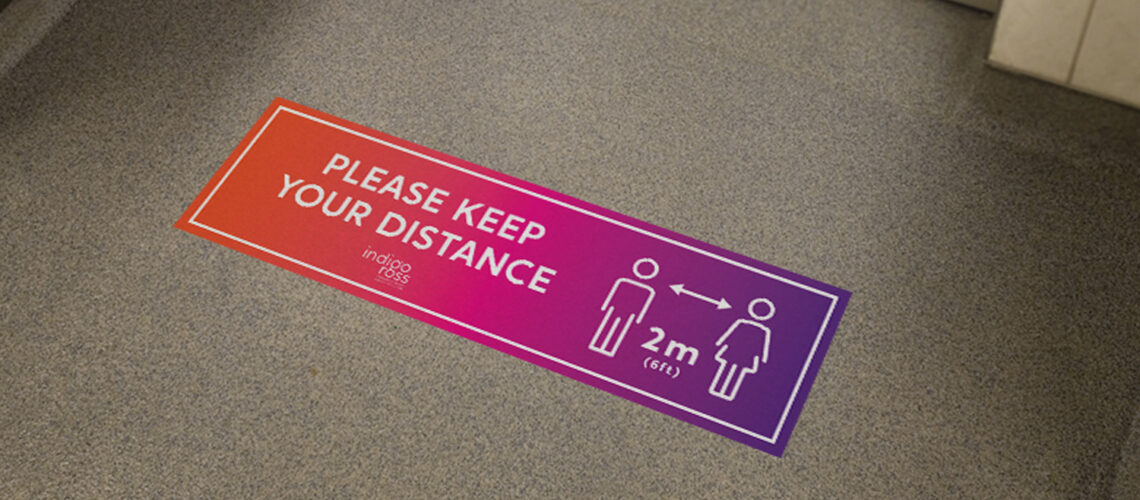COVID-19 has kept us away from the office, but this doesn’t mean it’s kept us from thinking about how to improve it, ready for our return.
We have explored the five key points to consider for adapting your office design.
OPEN PLAN, DIVIDED

There’s been a lot of speculation about the office and the long-lasting impact COVID-19 will have on the ever-popular open plan space.
Open plan spaces are versatile, and the potential is huge. With the government guidelines in mind, right now we must consider utilizing this space by reducing density and introducing clearly de-lineated spaces that create division but avoids isolating teams.
By using loose furniture to create screening, the space could sub-divide into alternative zones for workstations, visitor space, meeting areas and break out areas.
TASK-DRIVEN DESIGN

With the principles of “agile working”, task-driven design provides an abundance of benefits for both the business and its people.
COVID-19 has demonstrated the reasons why businesses need to be more agile, more flexible with a strong focus on technology, and we see this trend increasing as businesses start to re-open their doors again.
During this global workplace experiment, not only have businesses learnt a lot about themselves, but as individuals on a personal level, we have also in the way that we work. In our recent study, 57% of respondents said they need a quiet, focused area to optimally perform their responsibilities. By introducing dedicated quiet zones so people can focus on their work will support staff, as well as raising productivity. Equally, 49% of respondents said collaboration was one of the biggest challenges of working from home, so defined areas that will foster open discussion, creativity and team working will encourage people back to the office.
This modern style working environment is attractive to employees. If we want to get the best out of our people, we must provide an office experience that is appealing to all and an environment that accommodates employees’ individual needs.
SAFETY & SANITISATION

There’s no doubt the virus has helped spotlight cleanliness in the workplace. In preparation of re-entry, landlords and employers must consider sterilizing all entry and exit points, and particularly those busy communal areas to mitigate risk.
But we must remember the human element in all of this – your people have a huge role to play as well. Clear signage and guidelines are essential throughout the office to make it easy for them to follow.
Directional signage doesn’t have to overpower, however, a subtle display throughout the design, including flooring, furniture and manifestations, can safely ease the route and flow of traffic around the building without negatively impacting the aesthetics.
ENCLOSED VS OPEN MEETING SPACE

In the pre-COVID-19 world, a newly designed space would usually include at least one enclosed meeting room with half a dozen chairs. Move on a few months, where we’ve heavily relied on Zoom, Teams and Skype for client meetings, interviews and project work, our new workspace now needs to adapt to accommodate another way of holding meetings effectively. Technology will play a big part here.
What we can’t ignore, however, is that an enclosed meeting room is deemed a high-risk area. To mitigate risk, offices can be designed to create open meeting spaces by using dividing screens away from high-density areas. To support physical well-being and reduce the chance of infection, employers can encourage shorter standing meetings and a booking system.
WELL-BEING AT HEART

Workplaces need to be designed not only with tasks and productivity in mind but should take into account the mental and physical well-being of its people.
In the return to work, break out areas need to be given the attention they deserve, and not just in terms of sanitization and safety. In our recent study, almost half of respondents (49%) cited well-being and loneliness as the biggest challenge to home working. Breakout areas can take many forms, but ultimately, they are there to support your people as a place of rest and/or socialization.
Biophilic design has been popular for some time now. By introducing natural elements into the workplace, such as vertical farms, has been proven to have a positive impact on mental fatigue, productivity and wellness. It’s not just living walls and potted plants, but better air filtration, lighting and water features can also help to bring the outdoors in.

